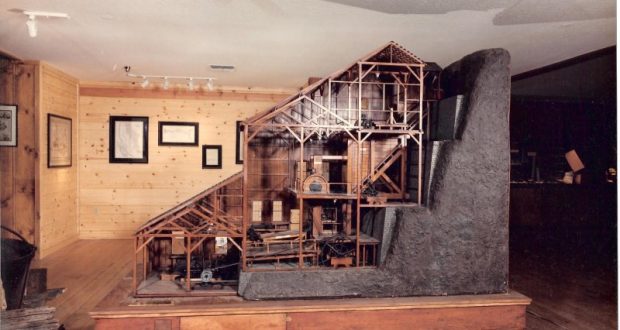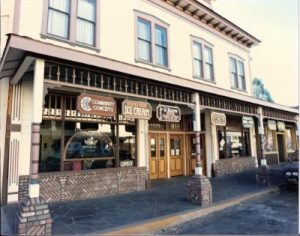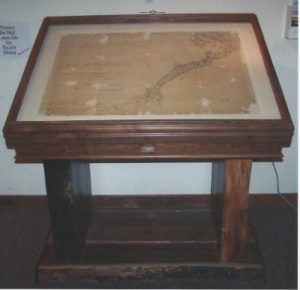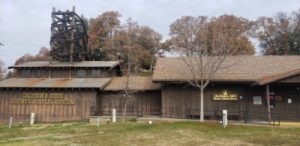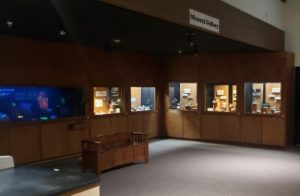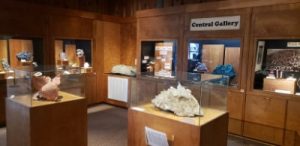By Sal Maccarone
Sometime during the spring of 1985 while restoring the 1901 Mariposa Hotel in downtown Mariposa, I began a conversation with an elderly gentleman who I first thought was a passerby. He eventually asked me about my experience with scale models. I had recently submitted an architectural model to the Mariposa Board of Supervisors that was used as a visual aid for a proposed hotel. But his visit wasn’t about that! After a few questions, he introduced himself as Elmer Stroming who I knew to be the famed hard rock mining expert.
Mr. Stroming was one of the many visionaries, and early supporters of a mining and mineral exhibit that was to be located in Mariposa. With a recent green light for the project after several years of logistics, he was now working with the state on parts of the building, and the interpretive displays within the museum. What he had in mind for me was to build a scale model of a gold stamp mill. Stamp mills were a subject that he was very familiar with. Towards the end of our conversation that day he also mentioned, “Oh by the way, the model has to actually work.” He told me that there was a head start though, in a model that was stored away. So, we went together to a storage space that had, among other things, about ten boxes of broken wooden and metal parts. He explained that the parts belonged to a model that was built in 1904. My reaction? Let’s start over!
After much research, and help from Elmer, we got started. My dad, a retired mechanical engineer at the time, also spent many hours on the project making the metal pieces function via our handmade leather belts. In the end, the trick was to scale all of the woodwork to match the existing metal components, such as: the crushing stamps, and the shaker table. Working from photographs, (and visiting some historic stamp mills around the state), I was able to produce a full cut away on one side of the new Douglas fir stamp mill model.
The finished model stands six feet high, and has four stories of simulated operation from crushing the stone to sorting the fines. We hid the motor in the pedestal, and used a one minute push button timer switch to activate the mill. The working model accurately shows viewers how difficult the gold extraction process really is.
Years later, as a result of that project I was also privileged to design and build a walnut frame and pedestal arraignment for an original John C. Fremont Land Grant Map. Coincidently, the California walnut tree that was used for the map display came from a site on John Fremont’s land that he was known to frequent. He may have even leaned against the tree from time to time. The stamp mill model and Fremont map have been on display at the California State Mining and Mineral Museum at the Mariposa Fairgrounds ever since. (https://www.parks.ca.gov/?page_id=588) It is a wonderful interpretive museum full of rare rocks, minerals, specimens and historic displays of all kinds. It is well worth a family visit now that the museum has reopened to the public.
Sal Maccarone

